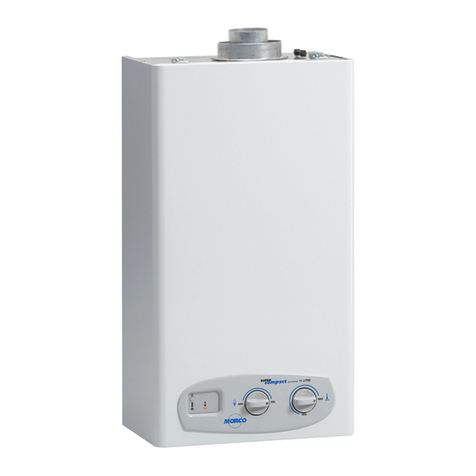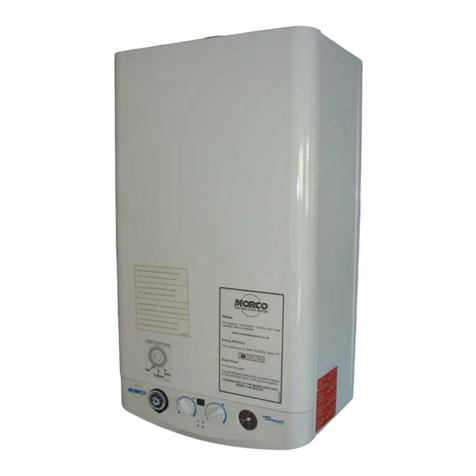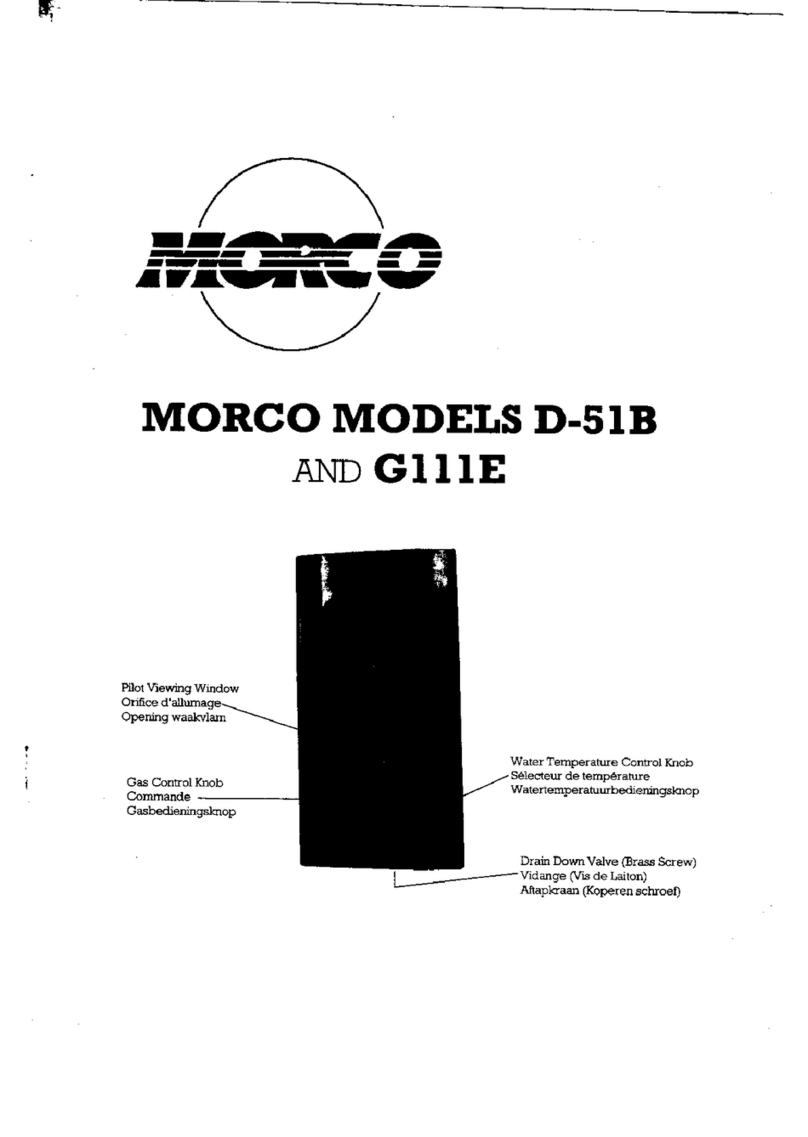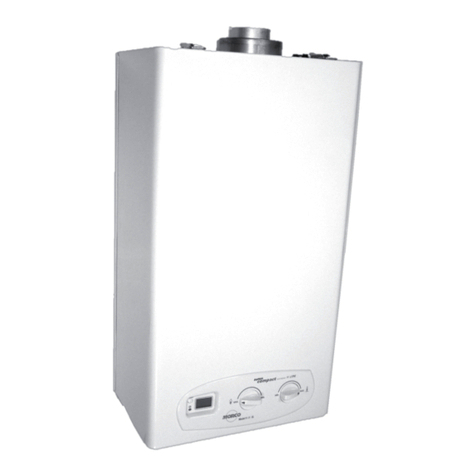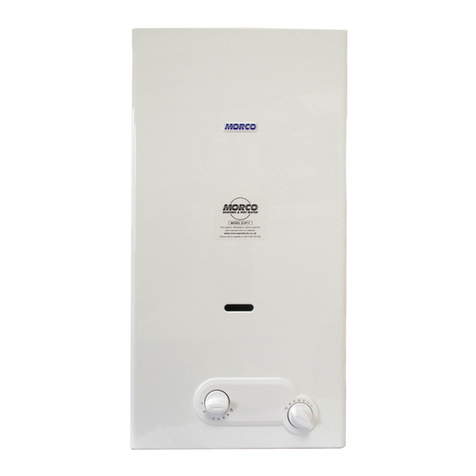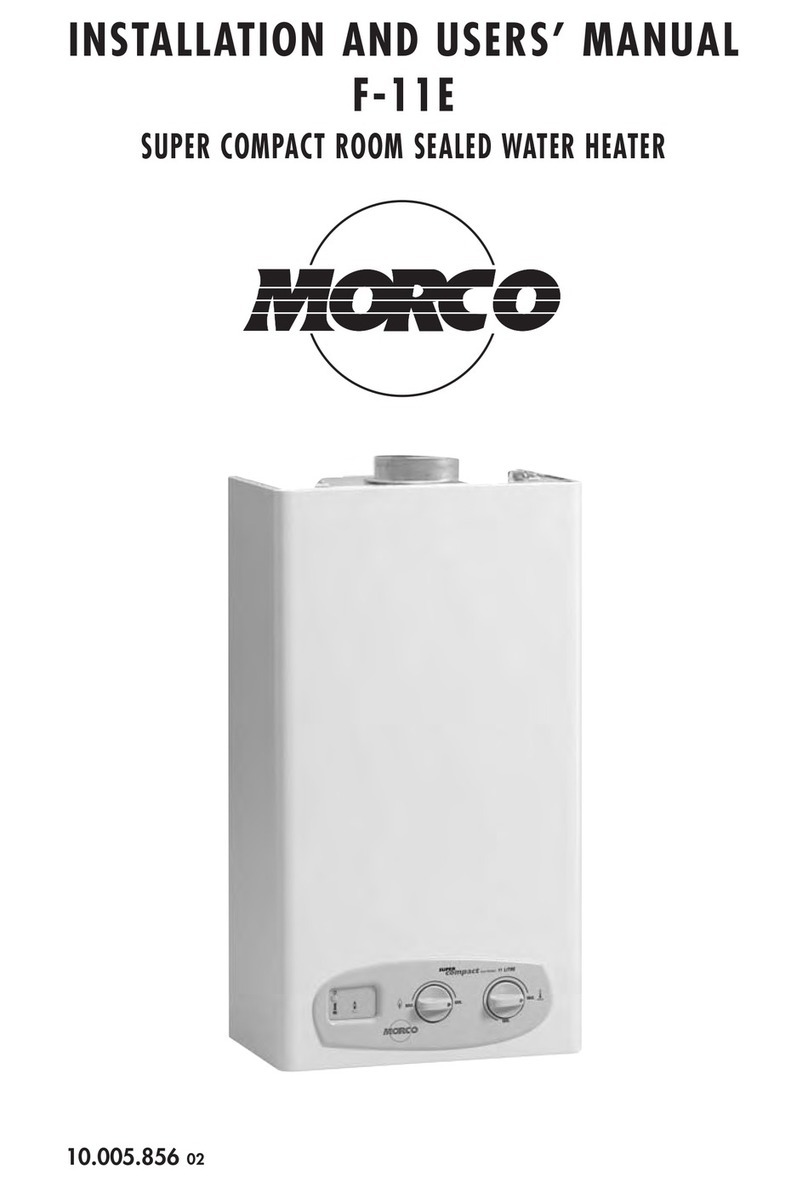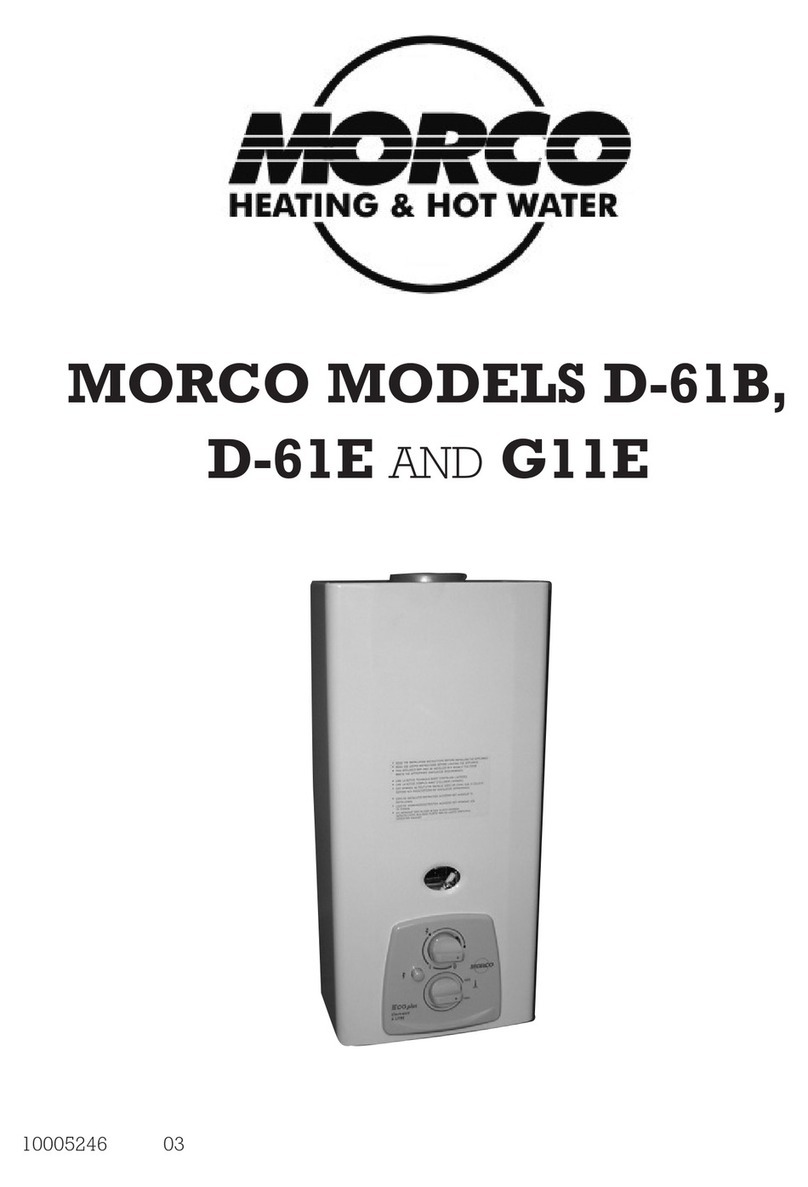
9
3. INSTALLATION
3.a Regulations
The use of gas devices is controlled by precise regulations.
Installation of liqueed petroleum gas (L.P.G.) must comply with
all the manufacturer’s requirements and those of the regulations
in force.
3.b Wall mounting
Warning
Do not install this device in an area that contains dust, greasy
vapour and/or corrosive elements.
- The device must be installed on a suitable wall surface that
allows the tting of a vertical exhaust gas ue
- It is vital to leave the minimal distances around the device as
shown in g 4 to allow for maintenance operations to take place.
Location
The water heater requires a plentiful supply of fresh air for correct
operation. Fixed ventilators or air inlets should not be obstructed.
Do not install the water heater in a location where incomplete
combustion is foreseeable such as bathrooms or bedrooms un-
less specically allowed by national legislation.
The minimum low and high level free ventilation areas are stated
on this page and must be observed.
The water heater must be xed to a load bearing wall in a vertical
plane.
g. 4
3.c Room ventilation
The installation of the water heater must comply with regulations
in force including any updates. See page 3
Warning: This device can only be installed in venues that are
permanently ventilated according to regulation in force.
• COMBUSTION GAS REMOVAL
A single wall vertical ue pipe of Ø90 (for EUP6) and Ø110mm
(for EUP11) must be used and when it passes through combu-
stible materials, a metal sleeve of Ø170mm must be used to
allow an air gap of 25 mm. Part codes FTFCT (for EUP6) and
FTFCTRIMG101 (for EUP11).
Flue pipes and terminals should comply with BS 715. Terminals
shall not be sited within 300 mm. of a ventilator or open window.
In the U.K. full details of ueing requirements are given in BS EN
1949.
The overall length of the ue must be 600mm from the bottom
of the terminal louvres to the top of the water heater. At least
250mm of this length must be external to the roof through which
it is tted.
• AIR SUPPLY FOR COMBUSTION
Air requirements: Reference is made to BS EN 1949 and EN
721 covering ventilation requirements for permanent dwellings,
caravans and boats.
Fixed ventilation should be provided to avoid draughts as far as
possible without impairing the free area of ventilation, even in ad-
verse weather conditions. If the heater is positioned in location
which may be subjected to strong draughts i.e. close to a window
or opening then strong draughts or gusts of wind may extinguish
the pilot.
All permanent openings for ventilation should be designed to
pre- vent the entry of vermin. Where screens are provided, they
should not have apertures of less than 6 mm. or greater than 9
mm. in any direction, and they should be accessible for cleaning.
Fine mesh screens shall be avoided as they are liable to become
blocked with dust.
The location of vents and the method of cleaning them should be
stated in the Owners Handbook (Caravans and Boats).
As a guide, the minimum effective free area of vents is stated
below in connection with this water heater. Additional appliances
burning gas in the same area would require additional ventilation.
If the appliance is installed in an enclosed cupboard in a Caravan
Holiday Home the required ventilation is that specied in BS EN
1949, i.e. 10 cm² per kilowatt input rating divided between high
and low.
3.d Gas Connection
The water heater should be connected to the gas supply via a
15mm diameter copper gas pipe. A gas isolation valve must be
t- ted to the gas inlet on the water heater.
When installing or commissioning the water heater the following
must be observed:
- The diameter of the gas pipe between the supply bottle or tank
must be in accordance with the regulations in force
- The regulator size and pressure specication are correct for
the application
- The correct gas (LPG) is being supplied
- All the required gas pressure and tightness tests are carried
out as part of the commissioning process.
- Gas joints downstream of the magnetic gas valve must be
checked with leak detection uid while the heater is running
- Gas jointing paste should not be used when connecting the
gas isolation valve
Do not obstruct the area’s ventilation openings where the device
is installed to avoid dangers such as the build-up of toxic and
explosive gases.
ATTENTION: if the appliance is supplied with G31@50 mbar,
remove the protective cap (pos. 10 water heater components
pag. 7) and regulate the pressure screw so that the burner rea-
ches the pressure indicate in the technical data.
50 50
200
